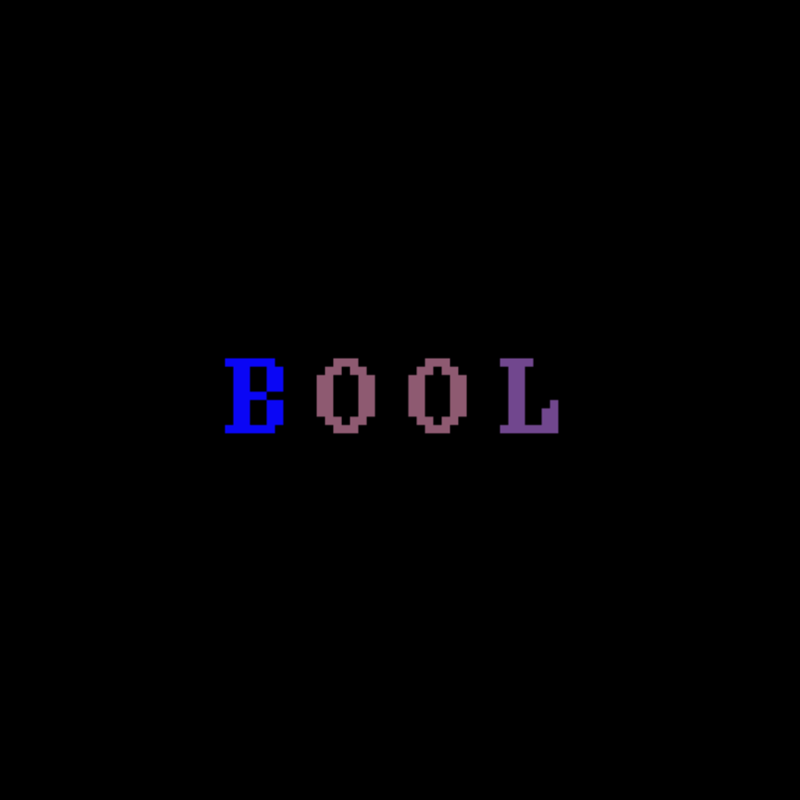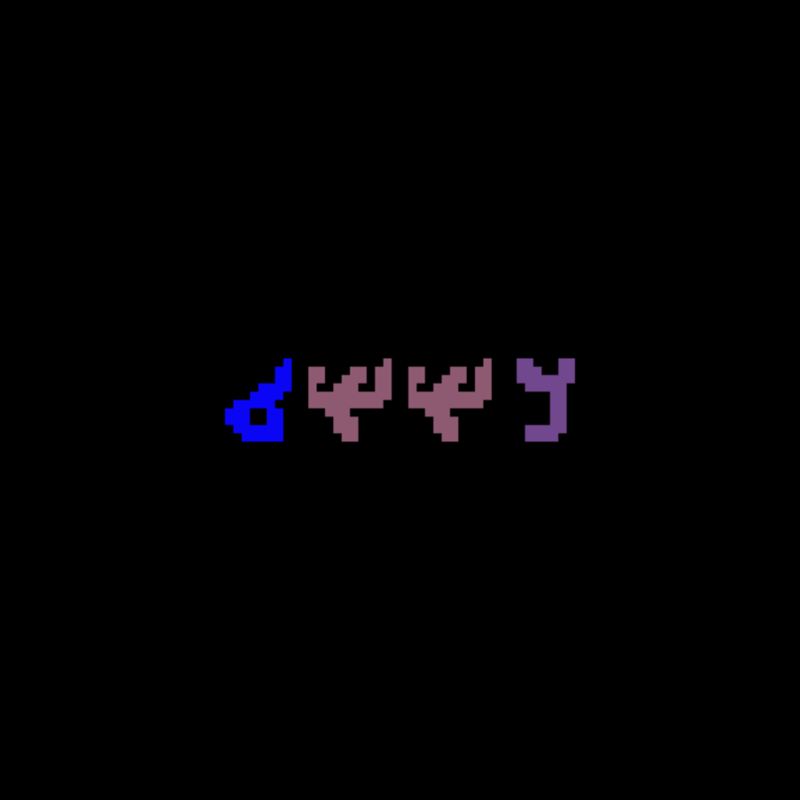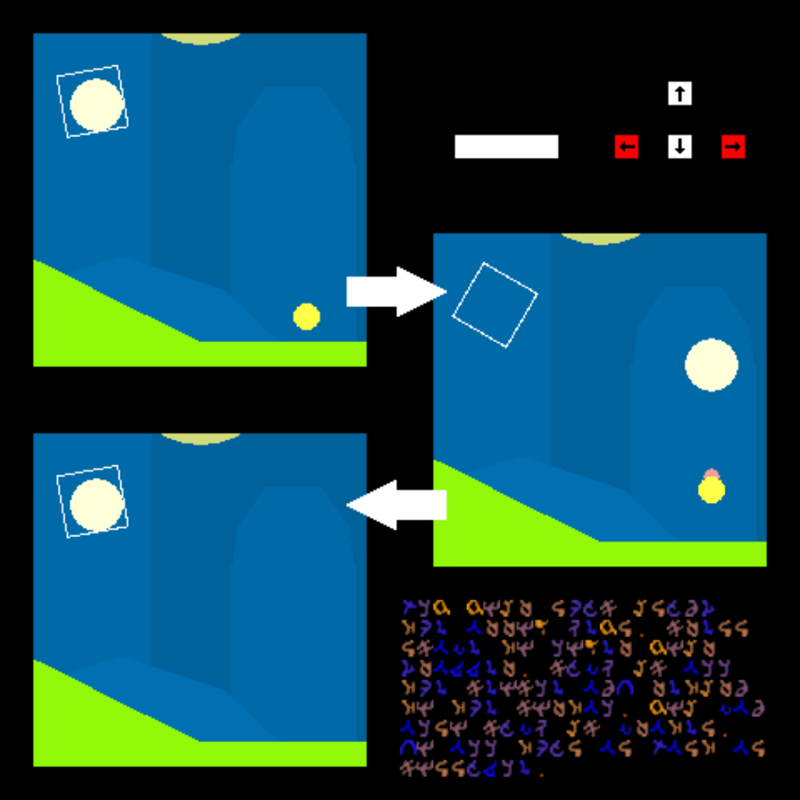Retro Replay Review
Gameplay
Bool delivers a deceptively simple core loop that revolves around keeping a white ball afloat through a series of abstract levels. Your primary tools are limited thrust power and a retractable rope that reels in collectibles—yellow balls, orange squares, and thrust-replenishing triangles. The tension in each level arises from balancing continuous thrust usage against the necessity to glide and conserve power. Letting the ball drift along the scenery becomes as crucial as active propulsion, turning each segment into a brief strategic puzzle rather than a straight-up platforming gauntlet.
(HEY YOU!! We hope you enjoy! We try not to run ads. So basically, this is a very expensive hobby running this site. Please consider joining us for updates, forums, and more. Network w/ us to make some cash or friends while retro gaming, and you can win some free retro games for posting. Okay, carry on 👍)
Collecting items feels tactile and satisfying thanks to the rope mechanic. Instead of running over pickups, you must actively deploy and retract a tether, creating a rhythmic ebb and flow in your movement. Every time you latch onto a yellow ball or orange square, there’s a gratifying tug that underscores the sense of connection between player and environment. The triangles, which grant an extra thrust bar, inject a rewarding risk–reward element: do you burn precious fuel reaching a distant triangle or conserve what you have and gamble on gliding?
Failing to manage your thrust or accidentally brushing against the environment three times ends your run, adding a layer of high-stakes tension. This makes every touchdown on a platform feel weighty—one mistake can derail your entire collection spree. The requirement to return to the white starting point with all items aboard intensifies the challenge, turning familiar routes into calculated return trips. It’s a minimalist design that demands a mix of dexterity, timing, and resource management, keeping you engaged through repeated trial and error.
Graphics
Visually, Bool embraces a stark, geometric aesthetic. Levels consist of simple, colorful shapes set against a flat background, evoking a modernist art installation more than a traditional video game world. The white ball, yellow spheres, orange squares, and sharp triangles stand out crisply, ensuring that collectible items are always easy to identify even in complex layouts. This minimalism isn’t just cosmetic—it serves the gameplay by focusing your attention on fuel conservation and precision maneuvering.
The title screen’s illegible custom font makes an immediate statement about the game’s experimental nature. At first glance, menu commands appear indecipherable, forcing players to tinker with the asset files—each letter of the alphabet is stored separately—to figure out how to start the game. This unconventional puzzle extends beyond the levels themselves and into the user interface, creating a sense of discovery that frames the entire experience as a form of interactive art.
While Bool’s visuals lack high-resolution textures or advanced lighting, its bold color palette and clean shapes have a timeless charm. The environments feel abstract yet cohesive, as if each level were a page torn from a sketchbook of minimalist design experiments. Subtle animations—the gentle bob of the ball when idling, the rope’s smooth extension and retraction—add just enough polish to make the world feel alive without detracting from the purity of the gameplay loop.
Story
Bool doesn’t provide a conventional narrative, and that’s by design. There’s no protagonist biography, no cutscenes, and no text-heavy lore. Instead, the game tells its story through mechanics and abstraction, inviting players to project their own meaning onto the floating shapes and suspended orbs. The absence of explicit plot details keeps the focus squarely on the task at hand—collecting, gliding, and conserving thrust.
One could interpret the white ball’s journey as a metaphor for exploration and resourcefulness. Starting at a central launch point, you venture into unknown terrain, scavenge what you can, and make a calculated return. The tension of running low on thrust or colliding with obstacles three times resonates like a minimalist, wordless fable about survival and ingenuity. In this sense, every run feels like a personal narrative of trial, error, and eventual mastery.
By refusing to spoon-feed a storyline, Bool fosters a contemplative atmosphere. Players often pause after a successful run, not just to reset the level, but to savor the feeling of having overcome a puzzle crafted from pure mechanics. The game’s narrative is thus emergent, shaped by each player’s unique approach to momentum and micromanagement. It may not suit those craving cinematic drama, but for experimental gamers, the silent storytelling is an integral part of the appeal.
Overall Experience
Bool stands out as a bold experiment in minimalist game design. Its tight focus on thrust management and collectible retrieval creates a compact, replayable experience that lingers in the mind long after the screen goes dark. While its upfront learning curve—including deciphering the title-screen font—may frustrate casual players, it rewards persistence with moments of genuine “aha” satisfaction.
The lack of traditional bells and whistles—no soundtrack beyond simple beeps, no cutscenes, and no written instructions—means there’s nowhere to hide; every design choice is exposed and open to scrutiny. For fans of pure, unadulterated mechanics, that’s a feature rather than a bug. Bool feels like an artist’s statement: each level is a canvas for experimentation, each run an exercise in resource stewardship.
Ultimately, Bool is best appreciated by those willing to embrace its experimental ethos. If you’re searching for a bite-sized challenge that values precision, restraint, and discovery over narrative fireworks or sprawling open worlds, this early effort from Mark Essen is well worth exploring. Its blend of tension, minimalism, and mechanical ingenuity make it a memorable indie gem that continues to inspire and provoke discussion among devoted players.
 Retro Replay Retro Replay gaming reviews, news, emulation, geek stuff and more!
Retro Replay Retro Replay gaming reviews, news, emulation, geek stuff and more!









Reviews
There are no reviews yet.